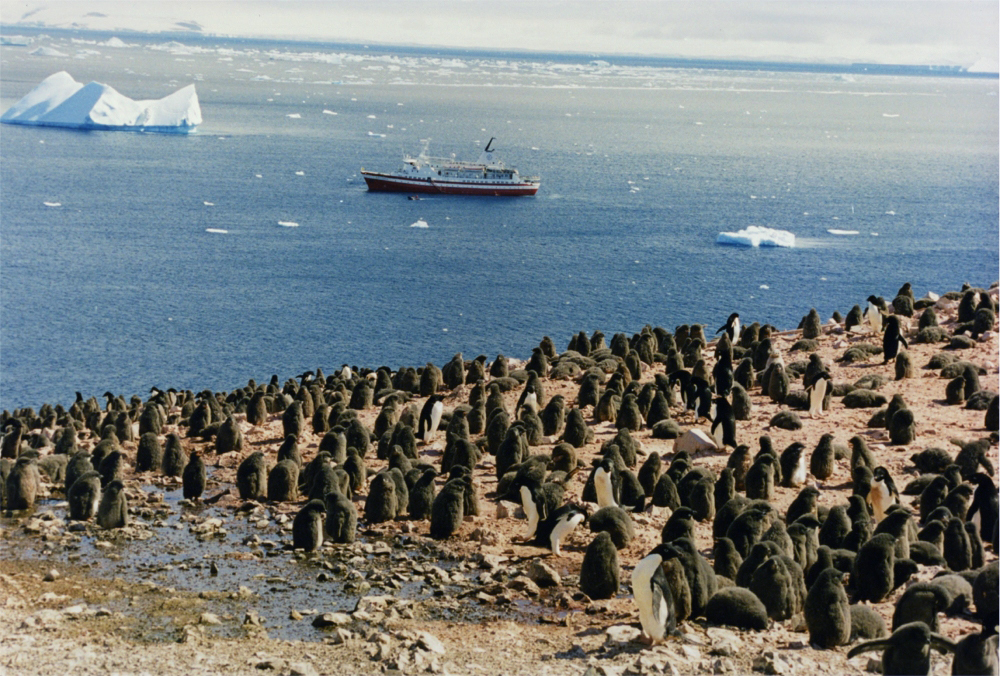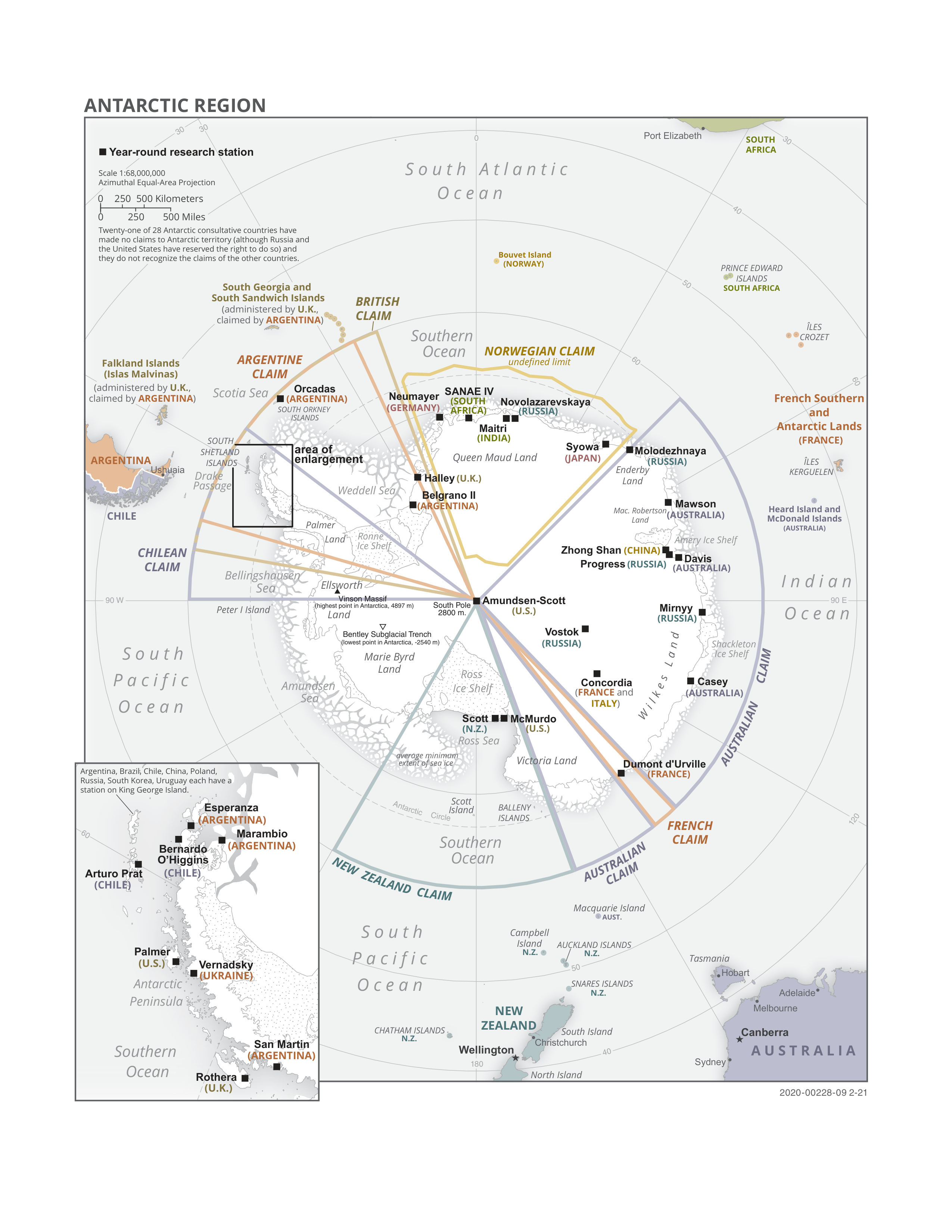|
Curzon Islands
The Curzon Islands are a small group of rocky islands lying close off Cape Découverte, Adélie Coast. They were probably sighted in January 1840 by a French expedition under Captain Jules Dumont d'Urville, though not identified as islands on d'Urville's maps. The islands were roughly charted in 1912 by Captain J.K. Davis of the Australasian Antarctic Expedition ship ''Aurora'' and named by Mawson for Lord Curzon, the President of the Royal Geographical Society, 1911–14. The islands were mapped in detail by the French Antarctic Expedition, 1950–52. Important Bird Area A 359 ha site comprising the island group and the intervening marine area has been designated an Important Bird Area (IBA) by BirdLife International because it supports about 13,000 breeding pairs of Adélie penguins, mainly on Retour Island, the largest of the group. South polar skuas and Wilson's storm-petrels also breed in the islands. The closest permanent station is the French Dumont d'Urville ... [...More Info...] [...Related Items...] OR: [Wikipedia] [Google] [Baidu] |
Antarctica
Antarctica () is Earth's southernmost and least-populated continent. Situated almost entirely south of the Antarctic Circle and surrounded by the Southern Ocean, it contains the geographic South Pole. Antarctica is the fifth-largest continent, being about 40% larger than Europe, and has an area of . Most of Antarctica is covered by the Antarctic ice sheet, with an average thickness of . Antarctica is, on average, the coldest, driest, and windiest of the continents, and it has the highest average elevation. It is mainly a polar desert, with annual precipitation of over along the coast and far less inland. About 70% of the world's freshwater reserves are frozen in Antarctica, which, if melted, would raise global sea levels by almost . Antarctica holds the record for the lowest measured temperature on Earth, . The coastal regions can reach temperatures over in summer. Native species of animals include mites, nematodes, penguins, seals and tardigrades. Where vegetation o ... [...More Info...] [...Related Items...] OR: [Wikipedia] [Google] [Baidu] |
Important Bird Area
An Important Bird and Biodiversity Area (IBA) is an area identified using an internationally agreed set of criteria as being globally important for the conservation of bird populations. IBA was developed and sites are identified by BirdLife International. There are over 13,000 IBAs worldwide. These sites are small enough to be entirely conserved and differ in their character, habitat or ornithological importance from the surrounding habitat. In the United States the Program is administered by the National Audubon Society. Often IBAs form part of a country's existing protected area network, and so are protected under national legislation. Legal recognition and protection of IBAs that are not within existing protected areas varies within different countries. Some countries have a National IBA Conservation Strategy, whereas in others protection is completely lacking. History In 1985, following a specific request from the European Economic Community, Birdlife International ... [...More Info...] [...Related Items...] OR: [Wikipedia] [Google] [Baidu] |
Penguin Colonies
Penguins ( order Sphenisciformes , family Spheniscidae ) are a group of aquatic flightless birds. They live almost exclusively in the Southern Hemisphere: only one species, the Galápagos penguin, is found north of the Equator. Highly adapted for life in the water, penguins have countershaded dark and white plumage and flippers for swimming. Most penguins feed on krill, fish, squid and other forms of sea life which they catch with their bills and swallow it whole while swimming. A penguin has a spiny tongue and powerful jaws to grip slippery prey. They spend roughly half of their lives on land and the other half in the sea. The largest living species is the emperor penguin (''Aptenodytes forsteri''): on average, adults are about tall and weigh . The smallest penguin species is the little blue penguin (''Eudyptula minor''), also known as the fairy penguin, which stands around tall and weighs . Today, larger penguins generally inhabit colder regions, and smaller penguins in ... [...More Info...] [...Related Items...] OR: [Wikipedia] [Google] [Baidu] |
Important Bird Areas Of Antarctica
Importance is a property of entities that matter or make a difference. For example, World War II was an important event and Albert Einstein was an important person because of how they affected the world. There are disagreements in the academic literature about what type of difference is required. According to the causal impact view, something is important if it has a big causal impact on the world. This view is rejected by various theorists, who insist that an additional aspect is required: that the impact in question makes a value difference. This is often understood in terms of how the important thing affects the well-being of people. So on this view, World War II was important, not just because it brought about many wide-ranging changes but because these changes had severe negative impacts on the well-being of the people involved. The difference in question is usually understood counterfactually as the contrast between how the world actually is and how the world would have bee ... [...More Info...] [...Related Items...] OR: [Wikipedia] [Google] [Baidu] |
Dumont D'Urville Station
The Dumont d'Urville Station (french: Base antarctique Dumont-d'Urville) is a French scientific station in Antarctica on Île des Pétrels, Geologie Archipelago, archipelago of Pointe-Géologie in Adélie Land. It is named after exploration, explorer Jules Dumont d'Urville, whose expedition landed on Débarquement Rock in the Dumoulin Islands at the northeast end of the archipelago on January 21, 1840. It is operated by the "French Polar Institute, French Polar Institute Paul-Émile Victor", a joint operation of French public and para-public agencies. It is the administrative centre of Adélie Land. History A pioneering French Antarctic research station, Port Martin, located east of D'Urville, was destroyed by fire on the night of January 23, 1952, without death or injury. In 1952, a small base was built on Île des Pétrels to study a rookery of emperor penguins. This base was called Base Marret. As the main base Port Martin was a total loss, Base Marret was chosen as overwint ... [...More Info...] [...Related Items...] OR: [Wikipedia] [Google] [Baidu] |
Wilson's Storm-petrel
Wilson's storm petrel (''Oceanites oceanicus''), also known as Wilson's petrel, is a small seabird of the austral storm petrel family Oceanitidae. It is one of the most abundant bird species in the world and has a circumpolar distribution mainly in the seas of the southern hemisphere but extending northwards during the summer of the northern hemisphere. The world population was estimated in 2022 as stable at 8 to 20 million birds. In 2010 it had been estimated at 12-30 million. A 1998 book had estimated more than 50 million pairs. The name commemorates the Scottish-American ornithologist Alexander Wilson. The genus name ''Oceanites'' refers to the mythical Oceanids, the three thousand daughters of Tethys. The species name is from Latin ''oceanus'', "ocean". Taxonomy Originally described in the genus ''Procellaria'' it has been placed under the genus ''Oceanites''. Two or three subspecies are recognized and one population ''maorianus'' from New Zealand may be extinct. The nomin ... [...More Info...] [...Related Items...] OR: [Wikipedia] [Google] [Baidu] |
South Polar Skua
The south polar skua (''Stercorarius maccormicki'') is a large seabird in the skua family, Stercorariidae. An older name for the bird is MacCormick's skua, after explorer and naval surgeon Robert McCormick, who first collected the type specimen. This species and the other large skuas, such as the great skua, are sometimes placed in a separate genus ''Catharacta''. Description The south polar skua is a large bird (though small compared to other skuas sometimes placed in ''Catharacta'') that measures around in length. Adults are greyish brown above, and have a whitish (pale morph) or straw-brown (intermediate morph) head and underparts, and the contrast between head and body makes it easy to separate from similar species with good views. Juveniles and adult dark morphs are harder to distinguish from their relatives, and more subjective or difficult-to-observe criteria, such as the colder brown plumage and blue bill base, must be used. Identification Distinguishing this skua from ... [...More Info...] [...Related Items...] OR: [Wikipedia] [Google] [Baidu] |
Adélie Penguin
The Adélie penguin (''Pygoscelis adeliae'') is a species of penguin common along the entire coast of the Antarctic continent, which is the only place where it is found. It is the most widespread penguin species, and, along with the emperor penguin, is the most southerly distributed of all penguins. It is named after Adélie Land, in turn named for Adèle Dumont d'Urville, who was married to French explorer Jules Dumont d'Urville, who first discovered this penguin in 1840. Adélie penguins obtain their food by both predation and foraging, with a diet of mainly krill and fish. Taxonomy and systematics The first Adélie penguin specimens were collected by crew members of French explorer Jules Dumont d'Urville on his expedition to Antarctica in the late 1830s and early 1840s. Jacques Bernard Hombron and Honoré Jacquinot, two French surgeons who doubled as naturalists on the journey, described the bird for science in 1841, giving it the scientific name ''Catarrhactes adeli� ... [...More Info...] [...Related Items...] OR: [Wikipedia] [Google] [Baidu] |
BirdLife International
BirdLife International is a global partnership of non-governmental organizations that strives to conserve birds and their habitats. BirdLife International's priorities include preventing extinction of bird species, identifying and safeguarding important sites for birds, maintaining and restoring key bird habitats, and empowering conservationists worldwide. It has a membership of more than 2.5 million people across 116 country partner organizations, including the Royal Society for the Protection of Birds, the Wild Bird Society of Japan, the National Audubon Society and American Bird Conservancy. BirdLife International has identified 13,000 Important Bird and Biodiversity Areas and is the official International Union for Conservation of Nature’s Red List authority for birds. As of 2015, BirdLife International has established that 1,375 bird species (13% of the total) are threatened with extinction ( critically endangered, endangered or vulnerable). BirdLife International p ... [...More Info...] [...Related Items...] OR: [Wikipedia] [Google] [Baidu] |
French Antarctic Expedition
The French Antarctic Expedition is any of several French expeditions in Antarctica. First expedition In 1772, Yves-Joseph de Kerguelen-Trémarec and the naturalist Jean Guillaume Bruguière sailed to the Antarctic region in search of the fabled Terra Australis. Kerguelen-Trémarec took possession of various Antarctic territories for France, including what would later be called the Kerguelen Islands. In Kerguelen-Trémarec's report to King Louis XV, he greatly overestimated the value of the Kerguelen Islands. The King sent him on a second expedition to Kerguelen in late 1773. When it became clear that these islands were desolate, useless, and not the Terra Australis, he was sent to prison. Second expedition In 1837, during an 1837–1840 expedition across the deep southern hemisphere, Captain Jules Dumont d'Urville sailed his ship ''Astrolabe'' along a coastal area of Antarctica which he later named Adélie Land, in honor of his wife. During the Antarctic part of this expedi ... [...More Info...] [...Related Items...] OR: [Wikipedia] [Google] [Baidu] |
Antarctic Treaty System
russian: link=no, Договор об Антарктике es, link=no, Tratado Antártico , name = Antarctic Treaty System , image = Flag of the Antarctic Treaty.svgborder , image_width = 180px , caption = Flag of the Antarctic Treaty System , type = Condominium , date_drafted = , date_signed = December 1, 1959"Antarctic Treaty" in ''The New Encyclopædia Britannica''. Chicago: Encyclopædia Britannica Inc., 15th edn., 1992, Vol. 1, p. 439. , location_signed = Washington, D.C., United States , date_sealed = , date_effective = June 23, 1961 , condition_effective = Ratification of all 12 signatories , date_expiration = , signatories = 12 , parties = 55 , depositor = Federal government of the United States , languages = English, French, Russian, and Spanish , wikisource = Antarctic Treaty The Antarctic Treaty an ... [...More Info...] [...Related Items...] OR: [Wikipedia] [Google] [Baidu] |








